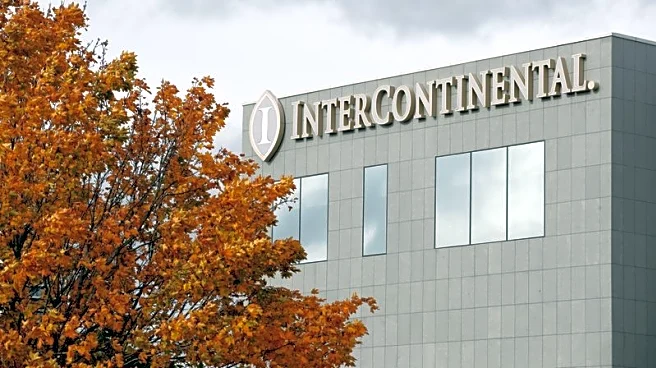What's Happening?
Major hotel companies have reported their third-quarter results, revealing a mixed picture of global travel demand. Premium and resort properties continue to outperform, while midscale and economy segments
in the U.S. and parts of Asia show signs of weakness. Hilton Worldwide Holdings reported a modest decline in system-wide RevPAR, down 1.1% year-over-year, despite beating earnings expectations with adjusted EPS of $2.11 and revenue of $3.12 billion. Hilton's luxury brands, including LXR, Conrad, and Waldorf Astoria, showed growth in RevPAR, contrasting with softer occupancy and ADR in midscale and urban markets. InterContinental Hotels Group (IHG) reported flat quarter-on-quarter RevPAR growth, with regional divergence, as EMEAA led growth while Greater China remained negative. Wyndham Hotels & Resorts experienced a more pronounced RevPAR decline, with global RevPAR down 5% year-over-year, driven by a similar decline in the U.S. Accor narrowly missed revenue expectations but raised its 2025 EBITDA growth target and announced a €100 million share buyback tranche for Q4.
Why It's Important?
The mixed results from major hotel chains highlight the ongoing challenges in the hospitality industry, particularly in the midscale and economy segments. The resilience of luxury and resort properties suggests a shift in consumer preferences towards premium experiences, which could influence future investment and development strategies within the industry. The cautious guidance from companies like Hilton and Wyndham indicates potential headwinds in the U.S. market, affecting stakeholders such as investors and hotel operators. The emphasis on capital returns and margin management reflects a strategic focus on shareholder value amid uneven demand recovery. These developments could impact employment, regional tourism economies, and the broader travel industry as companies adjust their strategies to navigate the current market conditions.
What's Next?
Marriott International and Hyatt are set to release their third-quarter results in early November, which will provide further insights into U.S. group and corporate demand recovery. Investors will be closely watching for updated RevPAR trends, commentary on group demand versus transient and group mix, and any guidance revisions for full-year 2025. The outcomes of these reports could influence market expectations and strategic decisions within the hospitality sector. Additionally, companies may continue to focus on cost discipline and capital allocation to protect margins, potentially leading to further adjustments in operational strategies and investment priorities.
Beyond the Headlines
The bifurcation in hotel performance between luxury and economy segments may have long-term implications for the industry, including shifts in consumer behavior and investment focus. The emphasis on capital returns and shareholder value could lead to increased financial engineering and strategic mergers or acquisitions. The regional divergence in performance, with stronger results in Europe and the Middle East compared to the U.S. and China, may prompt companies to reevaluate their geographic expansion strategies and resource allocation.













